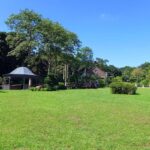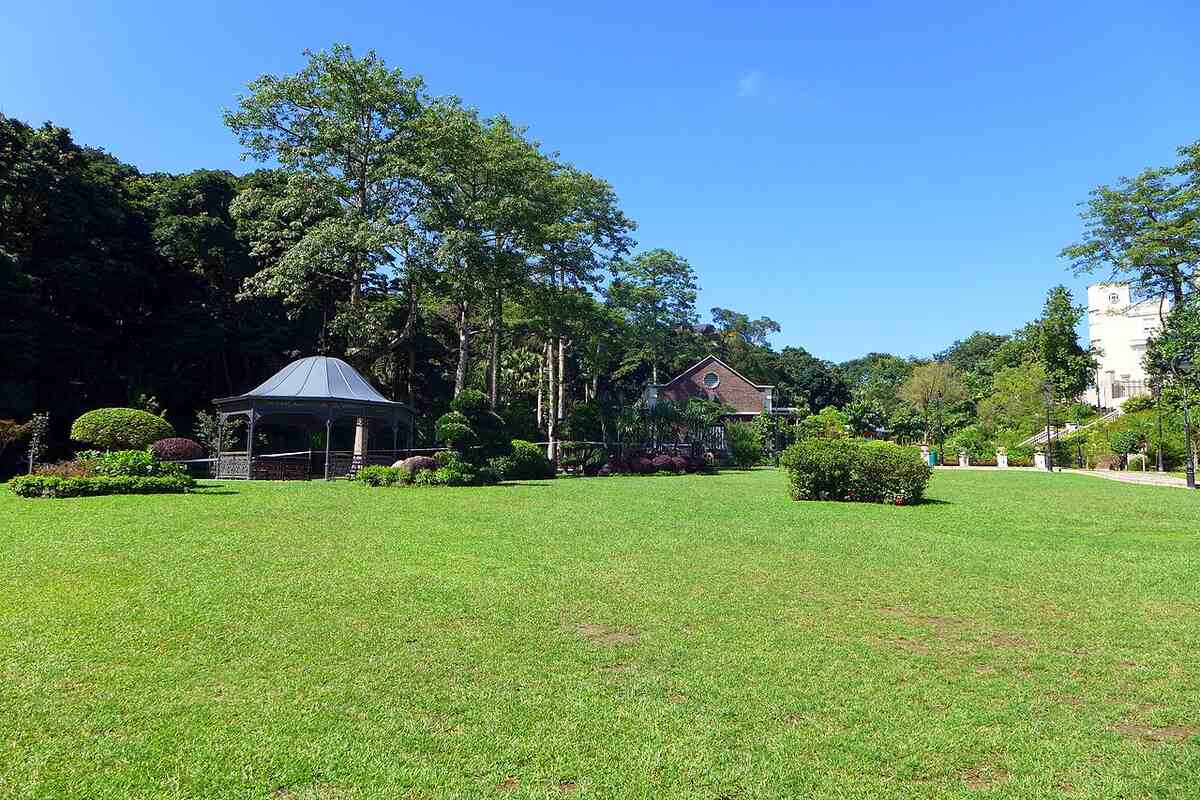
Among the many potential joys of living in beautiful Austin, TX, one of the most rewarding activities that some Texans indulge in is landscaping their lawns. However, many folks are not familiar with how to identify Austin grass types. But don’t worry! It’s not as hard as it seems.
A little how-to knowledge and a lot of TLC are all that’s needed to take care of your lawn properly. Here’s a rundown of the most common grass types found in Austin and some tips on how to identify each.
What Are The Most Common Types Of Grass Found In Austin?
Typically, grass types can be divided into two main groups: warm-season grasses and cool-season grasses. Austinites are lucky enough to be in a warm grass region, meaning the warm-season varieties are our go-to grass types. However, if you’re looking for cool-season turf, there are a few options, as well.
Most warm-season grass types tolerate heat and drought better than their cool-season counterparts. Typically, these varieties will require less maintenance but may suffer in the shade. These varieties are also quite tolerant of low fertilizer applications.
The most common warm-season grass types in Austin are:
- St. Augustinegrass
- Zoysiagrass
- Bermudagrass
- Buffalograss
Ryegrass is a cool-season grass variety and is often used in overseeding warm-season grass for a green winter lawn in Central Texas. Remember, cool-season grasses are more fragile and need more specialized maintenance in summer, such as proper irrigation, fertilization, and mowing height.
How To Identify The Different Grasses in Austin
Here comes the fun part! When you’re trying to identify a certain type of grass, there are some key indicators that you should look for, such as:
- Leaf color and texture
- Growth patterns
- Mowing height
- Presence of stolons (runners)
- Rhizomes vs. stolons (root system found in the soil)
St. Augustinegrass
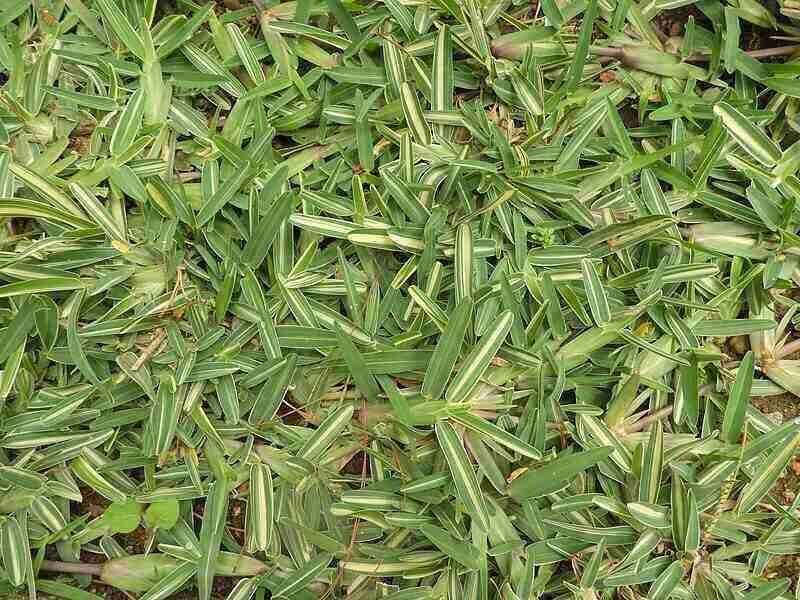
Photo Credit: Yercaud-elango / Wikimedia Commons / CC BY-SA 4.0
St. Augustinegrass is a coarse-textured, medium to dark green lawn grass. It has V-shaped leaf blades that have a boat-shaped tip, and it typically grows best in the warm climates of Central and West Texas. St. Augustinegrass does not tolerate traffic well and usually requires regular fertilization, mowing, and watering during the summer.
Pro tips: St. Augustinegrass is best planted in the late spring or early summer, around May or June.
St. Augustinegrass Main Characteristics:
- Color: Medium to dark green
- Shape: V-shaped and boat-shaped tip
- Spreads by stolons (aboveground runners)
- Shade tolerance: Moderate
- Drought tolerance: Moderate
- Foot traffic tolerance: Low to moderate
- Maintenance needs are moderate; needs four fertilizations a year and regular mowing
- Mow to a height of 2.5-3.5 inches
Grass Plug Options:
– Seed Ranch St Augustine Seville Grass Plugs (2 Trays)
– Seed Ranch St Augustine Floratam Grass Plugs (2 Trays)
Zoysiagrass
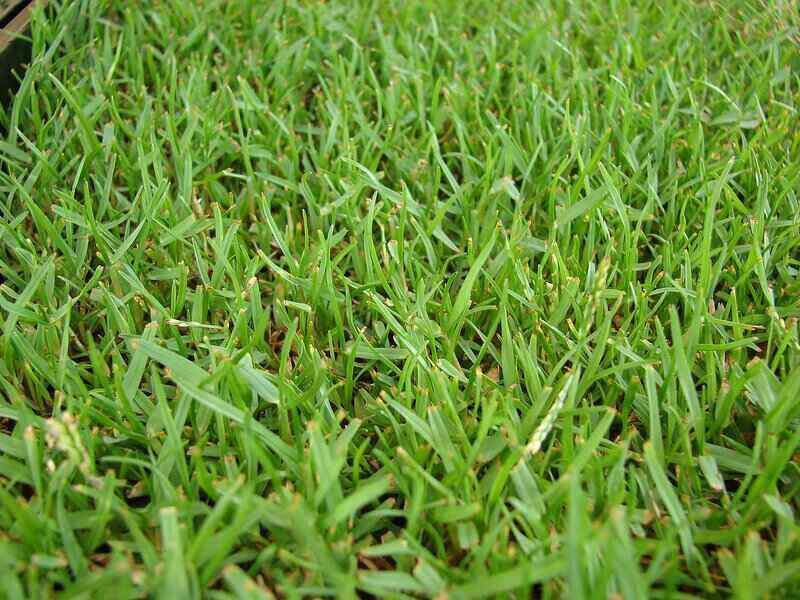
Photo Credit: Forest & Kim Starr / Wikimedia Commons / CC BY 3.0 US
Do you want an extra touch of class in your yard? Zoysiagrass is an expensive (but worth it) choice that could be what you want. It’s more slow-growing than St. Augustine and a great option if your yard is shadier.
Pro tip: Although it can tolerate some shade, you should avoid planting Zoysia in deep shade, as it won’t grow as well. A big plus of Zoysiagrass is wear resistance, and it requires very little fertilization. The downside is that it takes time to establish (up to 3 seasons).
To identify Zoysiagrass, look out for its short, sharp blades and its finer texture. Unlike St. Augustinegrass, it doesn’t have any auricles or sheaths.
Zoysiagrass Main Characteristics:
- Color: Varying shades of green
- Shape: Short, sharp blades with no auricles or sheaths
- Spreads by rhizomes and stolons (belowground and aboveground runners)
- Shade tolerance: Low to moderate
- Drought tolerance: Moderate to high
- Foot Traffic Tolerance: High
- Maintenance Needs: Moderate
- Mowing Height: 1-2 inches
Grass Plug and Seed Options:
– Zoysia Plugs (50 Large Grass Plugs)
– Zoysia Plugs (50 Full & Lush Grass Plugs)
– Zoysia Plugs (100 Plugs)
– Zoysia Emerald Grass Seeds (1/8 lb. of seeds)
– Zenith Zenith Grass Seeds (1/8 lb. of seeds)
Buffalograss
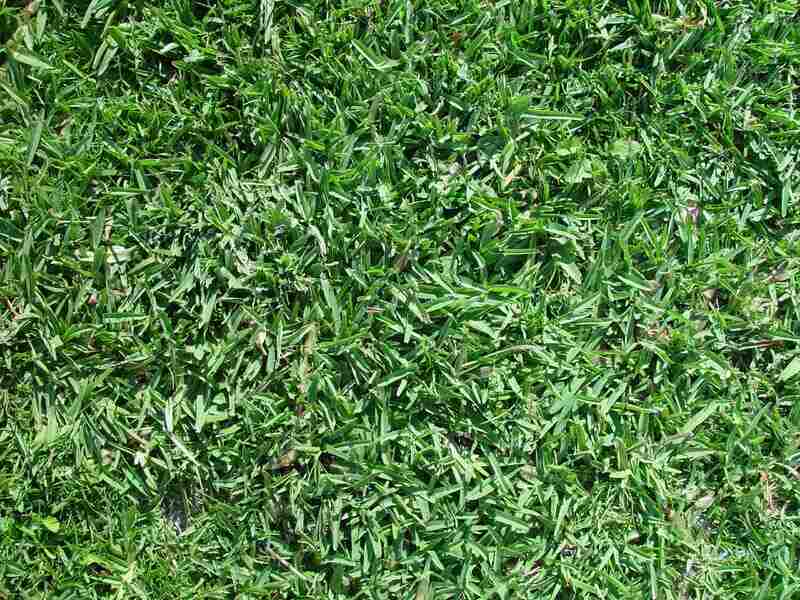
Photo Credit: Pixnio
Buffalograss is native to Texas and common in arid, drought-ridden regions. As its name suggests, it originally served as grazing ground for buffalo. Texas A&M provides a detailed guide and history of buffalograss.
This type of grass has low maintenance needs, grows up to 8 inches tall, and loves full sun. If you’re looking for something that can handle the combined brunt of sweltering heat and little water, Buffalograss is worth consideration. Its leaves are flat, thin, and fine with a bluish-green hue.
It’s also the perfect pick if you don’t want to waste time or money on regular mowing and fertilization. Though it takes a while to become fully established, this grass weathers well through most environmental conditions. It takes an average of 21-28 days to germinate and can spread by seeds and runners.
Buffalograss Main Characteristics:
- Color: Blue-green
- Shape: Short, curly blades
- Spreads by seed and runners
- Shade tolerance: Low
- Drought tolerance: High
- Maintenance Needs: Low
- Mowing Height: 2-3 inches high
- Foot Traffic Tolerance: Low to moderate
Grass Seed Options:
– Everwilde Farms Buffalograss Seeds (1 lb. of seeds)
– Buffalograss seed (primed) (5-lb. bag)
Bermudagrass
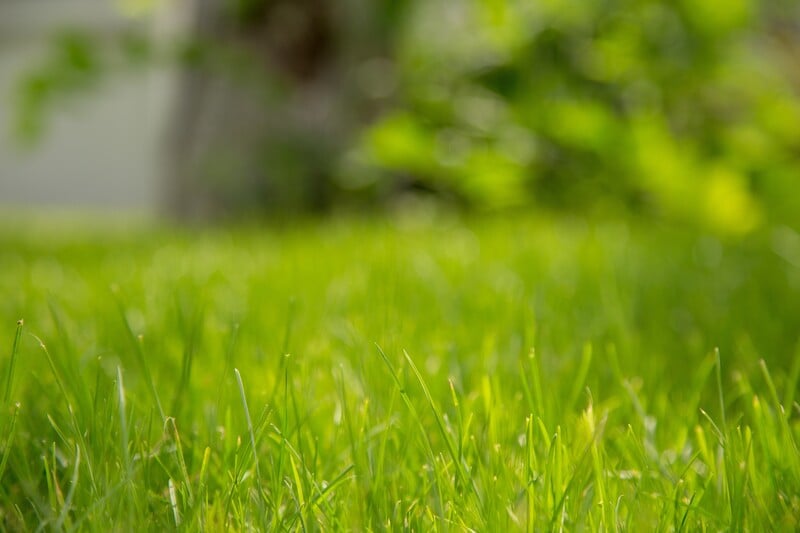
Photo Credit: Pexels
Need a high-traffic lawn? Bermudagrass gets its name from the shipwrecks on Bermuda Island and is one of the toughest grass types around. It’s light to medium-green turfgrass with a thick, wiry texture. It’s also great for golf courses, pastures, and large yards.
The leaf blades have hairs where the foliage meets the stem and are longer than an average blade of grass. It also has a noticeable middle vein (or midrib). Not just that, but it’s also drought and heat-resistant. Bermudagrass can also recover quickly from strong wear and can establish better in poor soils if you fertilize it regularly. It usually grows up to 2 inches high and reboots quickly in the spring.
Bermudagrass Main Characteristics:
- Color: Light to medium-green
- Shape: Long, wiry blades with a noticeable middle vein
- Spreads by stolons (aboveground runners) and rhizomes (underground)
- Shade tolerance: Low
- Drought tolerance: High
- Maintenance Needs: Moderate
- Mowing Height: 1 – 2 inches
- Foot Traffic tolerance: High
Grass Seed Options:
– Pennington Bermudagrass Bare Spot (5 lb. bag)
– Pennington Smart Seed Bermudagrass Mix (8.75-lb. bag)
– Scotts Turf Builder Bermudagrass (10-lb. bag)
– Hancock Seed Co. Bermudagrass (50-lb. bag)
Ryegrass
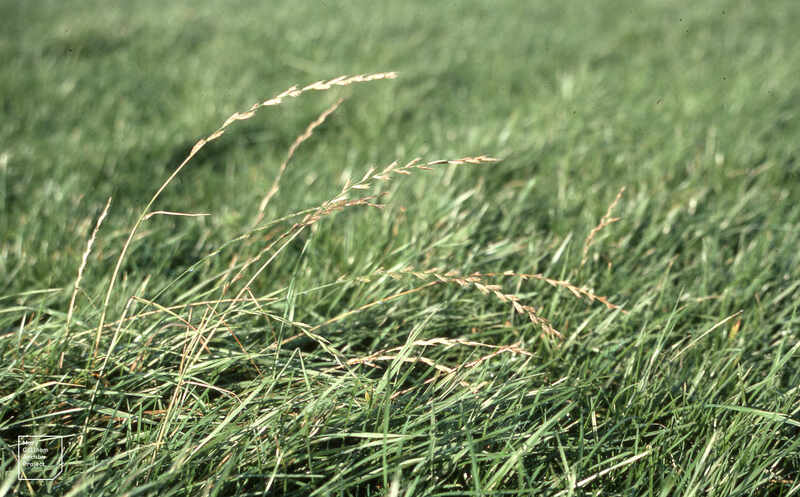
Photo Credit: Dr Mary Gillham Archive Project / Flickr / CC BY 2.0
Raise your hand if you want a green, lush lawn all year round. For this, an Austin lawn needs the help of ryegrass in winter. This cool season grass is rarely used as the primary seed in a Texas lawn, but it’s excellent for overseeding in the winter to keep the lawn vibrant.
Two types of ryegrass exist: annual and perennial. But they don’t last long in the Texas heat. Luckily, Austin’s warm temperatures make it suitable for annual ryegrass, being perfect for winter overseeding. Ryegrass has fine, rich green blades, and its leaf margin is parallel. It can stand up to foot traffic and has only moderate maintenance needs.
Ryegrass Main Characteristics:
- Color: Rich green
- Shape: Fine, parallel blades
- Spreads by: Bunch-type grass
- Shade tolerance: High
- Drought tolerance: Low
- Maintenance Needs: Moderate
- Mowing Height: Depends on the warm-season grass it’s mixed with
- Foot Traffic Tolerance: High
Grass Seed Options:
– Outsidepride Perennial Ryegrass Seed (5 lbs.)
– Eretz ProTurf Perennial Ryegrass Fine Lawn Seed (choose your size)
FAQ About Austin Grass Types
When it comes to grass, Austin is a warm-season grass region, meaning the warm-season varieties are your go-to grass types. Some of the best grass types for Austin include:
● St. Augustinegrass
● Zoysiagrass
● Bermudagrass
● Ryegrass
Identifying grass species can be a challenging task! Fortunately, some tips can help you determine which species of grass is growing in a particular area, such as:
● Inspection: Take a close look at the shape and texture of the blades – does it look like a blade of Bermudagrass or Buffalograss?
● Location: Where you find the grass can be indicative of which type it is. For example, Bermudagrass is commonly found in sunny areas such as fields.
● Color: Spend time observing the color of each type of grass to get an understanding of what it looks like.
● Pattern: Different types of grass have distinctive patterns that can be helpful in identifying them.
When deciding on what type of grass to plant in Austin, it’s important to look at what kinds of grass natively occur in the region. In Austin, you should look for warm-season grasses, such as Bermudagrass and Zoysiagrass.
Depending on your needs, you might also consider Ryegrass, which is great for winter overseeding. Additionally, look at factors such as shade tolerance and drought tolerance to make sure your grass has the best chance to survive in your specific yard.
It’s critical to give your Austin grass the proper care it needs to thrive, including the right amount of water, fertilizer, aeration, and mowing. Depending on the type of grass, you may need to mow at different heights or fertilize at different times of the year.
Lawn care in Central Texas can be challenging due to the long, hot, dry summers, water restrictions, and a variety of soil types. It’s essential to do your research – start with our detailed guide to Austin lawn care.
Final Thoughts
Patience and care are key to making sure your lawn looks magnificent in Austin. Once you familiarize yourself with the most common grass types, identifying each one won’t be hard. Just remember that not all grasses are created alike. Therefore, you should adjust your lawn care needs to suit each type.
Whenever you’re in doubt or need a hand, don’t hesitate to contact a local lawn care expert in Austin, TX. Good luck and happy gardening!
Main Image Credit: Wpcpey / Wikimedia Commons / CC BY 4.0
LawnStarter participates in the Amazon Services LLC Associates Program, an affiliate advertising program. LawnStarter may earn revenue from products promoted in this article.
